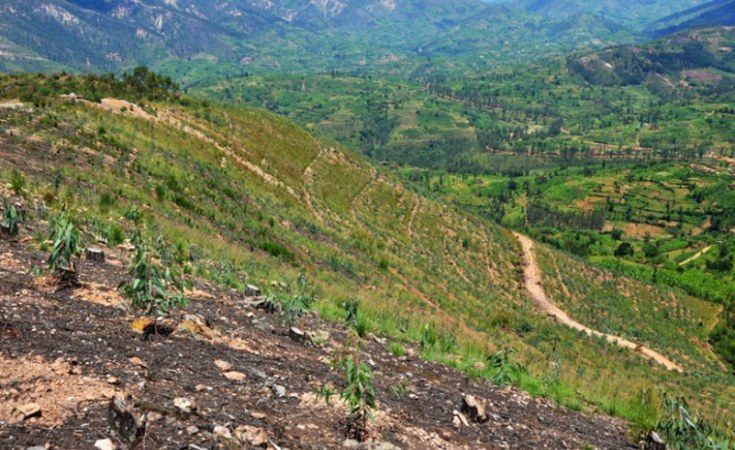Rwanda is planning to plant more trees, of which 40 per cent must be indigenous species, in order to access the carbon market, The New Times has learnt.
The country plants 30-40 million tree seedlings every year. Researchers are carrying out experiments on restoring 20 degraded indigenous (native) tree species so as to recommend those that are resistant to drought and can sequester large quantities of carbon dioxide to cope with climate change.
Concorde Nsengumuremyi, the Director General of Rwanda Forestry Authority, said the carbon market framework to help Rwanda compete on the international carbon market has been completed and is awaiting approval in the coming months.
The carbon market allows nations to finance carbon-cutting projects in other countries and count the avoided emissions towards their own climate targets.
A carbon credit is a kind of permit that represents one tonne of carbon dioxide removed from the atmosphere.
Rwanda targets to reduce greenhouse gas emissions by 38 per cent by 2030.
"We have decided to ensure 40 per cent of all trees to be planted be native species. We have recommended all partners such as NGOs, districts and others involved in tree planting comply with the directive. This is because native trees have the potential to sequester large quantities of carbon dioxide and, therefore, can help Rwanda tap into the carbon market," he said.
The native trees to be restored are also expected to resist weather conditions such as drought, diseases, and pests, he said.
"The tree species in Rwanda are dominated by Eucalyptus. If Eucalyptus is attacked by any disease, the country could become a desert. That is why having different tree species is very important so that when one species is attacked, others can survive," he explained.
Nsengumuremyi said indigenous tree species are recommended as they also have an ornamental role in both rural and urban areas.
"In addition to beautifying the country, these trees can be mixed with crops, meaning they can be planted in all parts of the country," he said.
Conservation scientists gather in Kigali
Speaking during the opening of the International Congress for Conservation Biology (ICCB 2023) in Kigali on Sunday, July 23, Jeanne d'Arc Mujawamariya, the Minister of Environment, said over the last three decades, Rwanda has made significant strides in protecting and restoring diverse ecosystems.
In early 2019, Rwanda reached its goal of increasing forest cover to 30 per cent of all land area.
Efforts were put into the protection and restoration of degraded ecosystems, such as wetlands, lakes, and natural forests, she said.
The forest sector, she said, has contributed to the reduction of land degradation, erosion control, and reduction of the intensity of landslides and floods in some areas.
However, she stated that there is still more work to be done, as forests continue to be cut down every year.
"Much more needs to be done for sustainability. Tree planting continues. As we replace those cuts, we have to consider native trees," she said.
She said the conference in Kigali is a platform to share experiences, exchange knowledge and engage in meaningful discussions.
Prof Beth Kaplin, a biodiversity conservation scientist who is also Acting Director for the Center of Excellence in Biodiversity and Natural Resources Management at the University of Rwanda, said investments are needed to build capacity for monitoring biodiversity, especially using bioindicators.
She stressed that there is a need to support Rwanda's biodiversity information system which enables data access and helps the country meet its targets in the global biodiversity framework.
"When we say we have restored ecosystems, we need evidence of what worked and what didn't work to embrace an adaptive approach, and we need to use indicators of healthy functioning ecosystems and prioritisation of native species," she said.
The conference has brought together conservation scientists from around the world who are using the latest technologies and approaches to conserve biodiversity.


